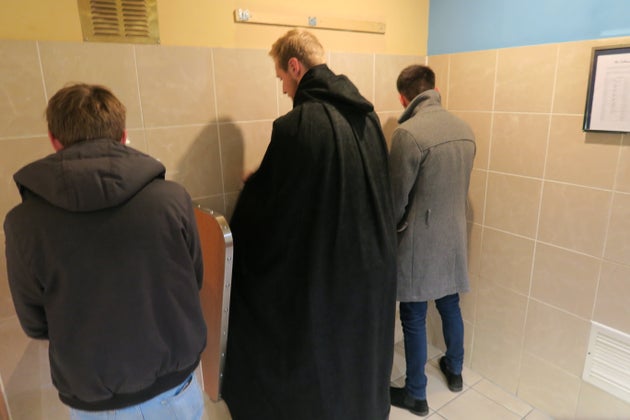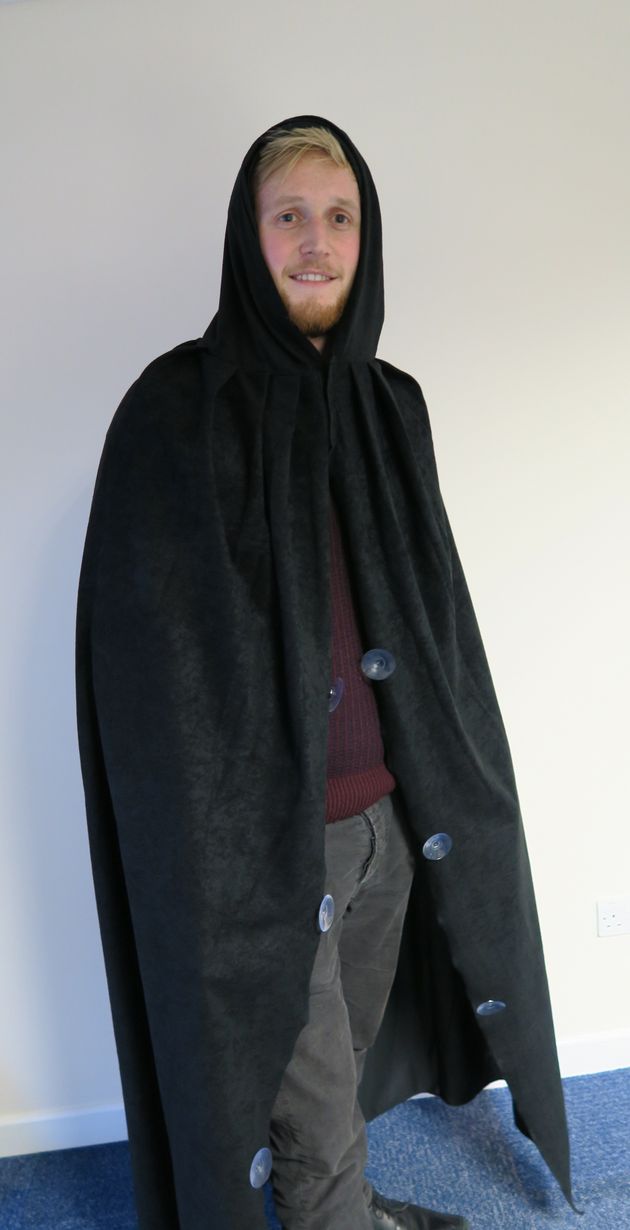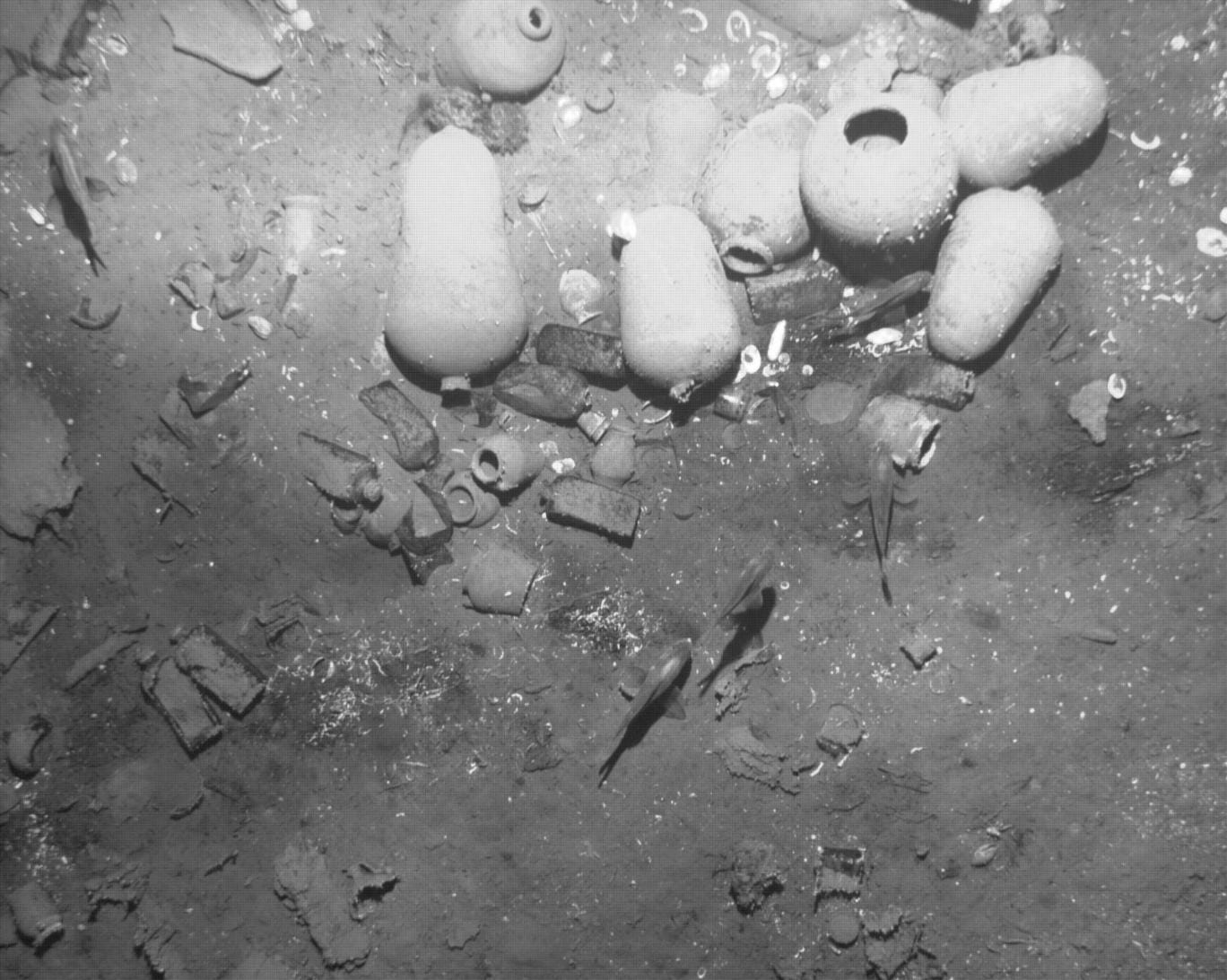
Friday, December 25, 2015
Sunday, December 13, 2015
Spanish Treasure Galleon San Jose Found Off Colombia's Coast

The San Jose and its estimated $17 billion treasure have been missing for more than 300 years.
by Nina Golgowski Trends reporter, The Huffington Post
After more than 300 years resting on the Caribbean floor, a sunken Spanish galleon believed to be carrying as much as $17 billion in treasure has been found, Colombia's president announced Friday.
"Great news: We found the galleon San Jose!” President Juan Manuel Santos tweeted.
The 1,066-ton ship was sunk by the British Navy in 1708 while carrying gold and silver bound for Europe during the War of the Spanish Succession.
Santos’ office shared underwater photos of cannons, ceramic and porcelain vases and a sword hilt nestled on the ocean floor on Saturday. Santos also tweeted a video showing a search team at sea.
The president called the find, located off Cartagena's coast, “a milestone for our underwater cultural heritage."
Though the war behind the ship’s downfall may be history, a modern-day legal battle over the shipwreck’s booty has been ongoing for several decades.
U.S.-based salvage company Sea Search Armada has been actively searching for the legendary treasure since the early 1980s. When it sank, the ship was carrying between $4 billion and $17 billion in gold and silver meant to help fund France's ongoing war against Britain, according to SSA.
Between 1980 and 1983, SSA Managing Director Jack Harbeston claims the company spent more than $10 million on surveying the ocean floor -- in addition to $2 million to $3 million over the next 28 years to "defend" the company's rights to it.
Harbeston, in an email to The Huffington Post, said the legal trouble began when the company made a pact with the Colombian government, promising that they would split any treasure collected from the wreckage.
When SSA later found what it believed to be the shipwreck's location and shared its coordinates with government officials, he says the government went back on that promise and further prohibited the company from visiting the site, going so far as to threaten "military force" should investigators return.
SSA consequently filed a lawsuit against the government in 1989, asserting its claim to the wreckage.
"Our thirty years of fighting for our rights in Colombia has led us to conclude that you can't believe a single thing the [Colombian government] says about the San Jose and our rights to it," Harbeston said.
In a major blow to the determined treasure hunters, a U.S. court in 2011 ruled that the SSA had missed the statute of limitations to sue for its right to the treasure. The group has since appealed that ruling.
According to Santos' office, the ship was discovered on Nov. 27 in an area that was not referenced by previous studies and searches.
Harbeston argues that if that's the case, why block the company from returning to the sites it previously visited?
"If, as the [Colombian government] claims, there is nothing at the sites disclosed to it by SSA, why wouldn't it let us visit the sites? If we visited our sites and found nothing then the game was over for SSA; we would fold our tent and leave. The [Colombian government] would be rid of us," he said.
Saturday, December 12, 2015
Stonehenge May Have Been Built Somewhere Else First, Then Moved
"Stonehenge is a second-hand monument."
- Ed MazzaOvernight Editor, The Huffington Post
- Stonehenge may not look very portable, but scientists say part of the massive ancient monument may have been first built somewhere else before being moved hundreds of years later.The new finding, published on Monday in the journal Antiquity, traces the bluestones -- or the smaller stones used at the 5,000-year-old monument -- to two quarries in Wales.But while the mystery of where the stones came from may have been solved, a new one has just emerged: Those stones were pulled from the quarries some five centuries before Stonehenge itself was built in what is now Wiltshire, 140 miles away."It could have taken those Neolithic stone-draggers nearly 500 years to get them to Stonehenge, but that’s pretty improbable in my view," Professor Mike Parker Pearson of UCL Institute of Archaeology and director the research team behind the study said in a news release. "It's more likely that the stones were first used in a local monument, somewhere near the quarries, that was then dismantled and dragged off to Wiltshire."Stonehenge's large "sarsen" standing stones, which weigh about 25 tons each, are from a quarry relatively close to the the monument. Researchers have long believed the smaller two-ton bluestones came from the Preseli Hills in Wales, but the team of geologists and archaeologists behind the new study says they've found the exact locations in Carn Goedog and Craig Rhos-y-felin. The research team uncovered an ancient "loading bay" from which the stones were pulled as well as the remains of burnt hazelnuts and charcoal from the quarry workers' campfires.Radiocarbon dating on the hazelnuts and charcoal puts the Craig Rhos-y-felin quarry at 3400 BC and Carn Goedog at 3200 BC.It's possible Stonehenge is simply hundreds of years older than previously estimated, but Parker Pearson told the Guardian he doesn't think that's the case."We think it's more likely that they were building their own monument [in Wales], that somewhere near the quarries there is the first Stonehenge and that what we’re seeing at Stonehenge is a second-hand monument," he told the newspaper.The research team has narrowed down the possible site of the original monument to a spot between the two Welsh quarries."We’ve been conducting geophysical surveys, trial excavations and aerial photographic analysis throughout the area and we think we have the most likely spot," Professor Kate Welham of Bournemouth University said in a news release. "The results are very promising -- we may find something big in 2016."
Friday, December 11, 2015
Suspected Burglar Hides From Cops In Pond, Is Killed By Alligator
"He hid in the wrong place."
by Lee Moran
Trends Editor, The Huffington Post
A suspected burglar was killed by an alligator while hiding in a Florida pond to avoid arrest, police believe.
The body of Matthew Riggins, 22, was discovered floating in a lake in Barefoot Bay, Brevard County, on Nov. 23, according to multiple reports.
The lower sections of his legs and a part of one arm were missing, reports the Orlando Sentinel.
The 11-foot-long alligator was so ferocious it had to be euthanized by a Florida Fish and Wildlife Conservation Commission trapper as Riggins' corpse was being recovered, according to Florida Today.
"He hid in the wrong place," local resident Laura Farris told Bay News 9.
Brevard County deputies were called to the locality on Nov. 13 after receiving reports of two men hiding behind homes, according to the Orlando Sentinel.
Officers searched the area with the help of K-9 units and a sheriff’s helicopter.
Riggins, from Palm Bay, managed to evade capture and called his girlfriend to say he was being chased, according to the reports. He'd previously told her he was going to break into homes with another unidentified man.
The search for the pair proved unsuccessful and was later called off. Riggins was not heard from again, and his family reported him missing to the Palm Bay Police Department the following day, reports WFTV.
Maj. Tod Goodyear from the Brevard County Sheriff’s Office told Bay News 9 that Riggins "probably went into the lake to hide from the officers and the dog, and came across that gator."
"To hide somewhere to try and get away, and then meeting up with an animal like that, no, I've never had that happen before," he added.
Riggins' alleged accomplice was arrested soon after, but is refusing to cooperate with deputies, according to WFTV.
Thursday, December 10, 2015
You Can Now Study Pizza At College
Students won't just debate the merits of thin versus sausage
by
- Trends Editor, The Huffington Post
Love pizza? Then this college major will be as easy as pie.
Students in England will learn how to make the perfect pie as part of a new degree.
Manchester Metropolitan University has teamed up with the Pizza Hut restaurant chain to offer the course, reports the Manchester Evening News.
Candidates won't just be topping flatbread with tomato sauce and cheese before slamming it in the oven, or debating the merits of thin versus sausage crusts, however.
They'll also learn everything needed to run their own successful business, from health and safety aspects to financial analysis, according to the Express Star.
The news has gone down well with students on Twitter.
"Over the next few years we will work hard to provide our apprentices and team members with the best training and development so that we can equip them with skills for life, not just for working in a restaurant,” Pizza Hut's HR director Kathryn Austin said.
More than 1,500 students will be enrolled in the next five years. KFC and McDonald's also offer similar apprenticeships in the United Kingdom.
Other unconventional degree courses currently on offer in the U.K. include Ethical Hacking at the University of Abertay in Dundee and Baking Technology Management at London's South Bank University, reports the Evening Standard.
Wednesday, December 9, 2015
Father And Son Cooks Accused Of Stealing $40,000 Of Chicken Wings
Paul and Joshua Rojek allegedly took the wings from the restaurant they worked at.


SYRACUSE, N.Y. (AP) — Authorities say a father and son stole more than $40,000 worth of chicken wings from a New York restaurant where they worked and sold them on the street or to other businesses.
The Onondaga County Sheriff's Office says 56-year-old Paul Rojek and 33-year-old Joshua Rojek, both of Syracuse, were caught stealing wings from the Twin Trees Too Restaurant in Syracuse.
Deputies say both men were employed as cooks when they placed numerous chicken wing orders with the restaurant's wholesaler. Officials say the Rojeks would later pick up the orders and resell them at a reduced price.
Deputies say the men billed about $41,000 worth of wing orders to the restaurant's account between last February and Nov. 21.
Both have been charged with grand larceny and falsifying business records. It couldn't be determined if they have lawyers.
Tuesday, December 8, 2015
Too Shy To Pee In A Public Bathroom?

Courtesy of Plumbworld
Urine Luck
The Privi-Pee aims to make your fear of peeing in public go down the drain.
If you're a guy who freezes up when you're shoulder-to-shoulder with a stranger at a public urinal, the Privi-Pee may one day be your No. 1 solution.
This device, not yet commercially released, is designed to help men hide their goodies as they do their business.
Online bathroom retailer Plumbworld unveiled the Privi-Pee prototype after a company survey reflected the anxiety some have over public toilets.
However, if these images look strange to you, please note that this device is still in its planning stages. And while many people agree that bathroom anxiety can be a serious issue, the company is not ruling out selling this product as a novelty item, too.
"We’re not sure when we’ll sell them yet, but we’re thinking about it being some sort of funny novelty product," Thomas Mulrooney, a Plumbworld marketing assistant, told The Huffington Post via email.
Mulrooney posted about the Privi-Pee in a Nov. 25 blog, explaining how the Plumbworld team invented the cover in an attempt to make public urination easier for the pee shy.
"The idea was based on a survey .... We found that 75 percent of male respondents said they would rather use a toilet cubicle/stall if a urinal adjacent to a free one was already occupied," Mulrooney said.
"Thirty percent said they got ‘stage fright’ when trying to urinate next to someone, which means that they couldn’t urinate at all."
When people suffer from paruresis, otherwise known as "shy bladder syndrome," they find it difficult or impossible to urinate in the presence of others, according to the International Paruresis Association website.
To use the Privi-Pee, a man must fasten the cape-like cover under his neck as he stands above the urinal. Suction cups at the end of the fabric adhere to the wall, creating a confined private space.
The device fits inside a backpack.

Daniel Cartland of Plumbworld tested the Privi-Pee and told Mulrooney's team he felt more comfortable using the urinal.
Members of the public who witnessed the testing found the concept a "genuinely funny idea," according to Mulrooney. "One man wondered if Daniel was some sort of bathroom superhero" because of the cape.
However, as fashion-forward and functional as it may seem, the Privi-Pee may not actually be all that effective in practice for those who struggle with a shy bladder.
"The problem is, people are concerned about other people paying attention to them, so if you pull out a cape, that is going to draw more attention to you," said Steve Soifer, CEO of the IPA and a University of Memphis professor.
Soifer also noted proximity is an issue, as people grow concerned when others are too close to them when they urinate.
"The product isn't useful for most people," he said, adding that it could potentially help one in a thousand individuals.
Those having trouble overcoming the issue of public urination can consider cognitive behavioral psychology, a standard treatment in the field, to help them get over their fears, he said.
Tuesday, August 18, 2015
Businessman makes £6k a MONTH launching firm which sends POTATOES in the post
His girlfriend called it "the stupidest idea" she'd ever heard of, but this young Texas entrepreneur claims demand is soaring for potatoes scribbled on.
Friday, August 14, 2015
The Grannies Who Had Never Seen The Sea
By Alison Gee
BBC News Magazine
A group of elderly women from a village in the Italian Alps have returned home after their first holiday - which for most of them was the first time they had seen the sea, let alone put a toe in it.
A group of elderly women from a village in the Italian Alps have returned home after their first holiday - which for most of them was the first time they had seen the sea, let alone put a toe in it.
Many of the women, as the Magazine reportedearlier this month, had never left the valley surrounding their village, Daone, until they set off on the 12-hour coach trip to the Croatian island of Ugljan.
"They were like little kids in a way, they were very emotional. They sang during all the trip," says Davide Valentini, who went along as part of a team making a documentary about the women.
"They played in the water and some of them, the most brave, literally jumped in the sea so it was a pretty intense emotion."
"As I saw the sea, the first thing I wanted to do was to put my foot in the water," says Iolanda Pellizzari, who at 73 was one of the youngest on the trip. "I'm not able to swim, but I felt a great sense of liberation."
"Despite the infirmities of age, swollen legs and the great heat, we will never forget the thrill of getting all together in the sea, holding hands," says Armida Brisaghella.
But what made the biggest impression on the women was a procession to celebrate the Madonna of the Snow.
The group chose Ugljan as a destination because the island has the Madonna of the Snow as its patron saint, just like their own village of Daone. On 5 August the islanders decorated a statue of the Madonna and took it by boat from one church to another.
"Taking part in the procession of the Madonna of the Snow and singing our hymn on the boat has been the strongest emotion I've ever experienced, after giving birth. I will never forget it," says Erminia Losa.
But although the funne, as they call themselves - the word for women in their local dialect - were treated like celebrities, not everything went smoothly.
"Sometimes they had issues with the food because they are not used to fish," says Valentini. "The Croatians wanted them to try all their beautiful fish so we had some problems."
Fortunately the women were prepared. "They had some polenta in their bags," Valentini reveals.
Many of the women had dreamed about a trip to the sea for years, but had never been able to afford it. An attempt to raise money by posing for a calendar came to nothing. In the end they resorted to crowd-funding - but were determined to send postcards to all their sponsors.
"It took us almost one entire day to personally write all the postcards," says Armida Brisaghella. "But every one of them deserved that. They made our dream possible and we are all extremely touched by the reaction of people." They sent nearly 200 postcards in all.
"One special postcard is the one they sent to the Pope," says Valentini. "When the whole crowd-funding thing happened they were called by Vatican Radio and they promised to send a postcard, so the very first one they wrote is the one to Pope Francis."
If they get invited to the Vatican next, the film will be called Funne 2, he jokes.
Reaction to the women in the world's media has been overwhelmingly positive, Valentini says, and a great help to the women in answering critics at home.
"People saw a story of hope and strength but what happened in their small village is the opposite, because these women are considered rebels so they needed to have the accomplishment of their mission to be recognised."
Katia Bernardi's documentaryFunne - sea dreaming girlswill be released at the start of 2016.
Wednesday, August 5, 2015
Incredible Photo Captures The 'Dark Side' Of The Moon
It's a regular celestial event witnessed from an entirely different perspective, and it sure is mesmerizing.
Last month, the Deep Space Climate Observatory (DSCOVR) captured a series of test photos with its Earth Polychromatic Imaging Camera. From its lofty perch 1 million miles from Earth, EPIC looked on as the moon transited our planet:
In a Wednesday release accompanying the image, NASA notes that humans had never seen the far side of the moon (often called the "dark side," though it gets plenty of sunlight) until 1959, when the Soviet Luna 3 captured the first-ever images.
Eagle-eyed readers might notice a faint green outline on the right side of the moon above, which NASA explains has to do with the way EPIC processes photos:
EPIC takes a series of 10 images using different narrowband spectral filters -- from ultraviolet to near infrared -- to produce a variety of science products. The red, green and blue channel images are used in these color images.Combining three images taken about 30 seconds apart as the moon moves produces a slight but noticeable camera artifact on the right side of the moon. Because the moon has moved in relation to the Earth between the time the first (red) and last (green) exposures were made, a thin green offset appears on the right side of the moon when the three exposures are combined. This natural lunar movement also produces a slight red and blue offset on the left side of the moon in these unaltered images.
The space agency also produced this gif of the event, which EPIC will be capturing twice a year:
DSCOVR's primary mission is to monitor solar winds in real time, though instruments onboard are also capturing data from Earth to be used in measuring ozone and aerosol levels, cloud height, vegetation properties and the ultraviolet reflectivity of the planet.
"This first DSCOVR image of our planet demonstrates the unique and important benefits of Earth observation from space," NASA Administrator Charlie Bolden said in the release.
"As a former astronaut who's been privileged to view the Earth from orbit," Bolden said, "I want everyone to be able to see and appreciate our planet as an integrated, interacting system. DSCOVR's observations of Earth, as well as its measurements and early warnings of space weather events caused by the sun, will help every person to monitor the ever-changing Earth, and to understand how our planet fits into its neighborhood in the solar system."
MH370: Reunion debris is from missing plane, says Najib
Part of the aircraft wing found on Reunion Island is from the missing MH370 plane, Malaysian Prime Minister Najib Razak has confirmed.
Mr Najib said experts examining the debris in France had "conclusively confirmed" it was from the aircraft.
But the investigators have stopped short of confirming the link, saying only that it is highly likely.
The Malaysia Airlines plane carrying 239 people veered off course from Kuala Lumpur to Beijing in March 2014.
The debris was found on the remote French Indian Ocean island a week ago and was taken to Toulouse for testing.
The plane is long believed to have crashed into the southern Indian Ocean after veering off course - though no evidence had been found despite a massive search operation
Friday, July 31, 2015
THE MONTH OF JULY ENDED WITH A BLOOD MOON
There's a reason why "once in a blue moon" is a saying and tonight proved it.
A blue moon is defined as any time there is a second full moon during a calendar month, according to NASA. While most years have 12 full moons, this year has 13.
Don't let the name fool you, though. Blue moons are very rarely blue. Most are pale gray and white, resembling a moon on any other night.
A truly blue colored moon can occur on rare occasions, according to NASA, with most being spotted after volcanic eruptions. It's also possible Friday's moon could be red.
"Often, when the Moon is hanging low, it looks red for the same reason that sunsets are red, NASA explains. "The atmosphere is full of aerosols much smaller than the ones injected by volcanoes. These aerosols scatter blue light, while leaving the red behind."
THE THEORIES SURROUNDING MH370
What happened to Malaysia Airlines Flight MH370 may never be proven - but that hasn't stopped conspiracy theorists from speculating:
- 1. It was shot down...
- during a joint military exercise between the US and Thailand
- 2. It was hijacked...
- for use in a terrorist spectacular on the anniversary of 9/11
- 3. It was switched...
- with flight MH17, and it was actually MH370 that was shot down over Ukraine in July last year
- 4. It landed...
- on Diego Garcia, a British-owned island in the Indian Ocean that is home to a major US military base
- 5. It was destroyed by a mysterious new 'weapon'...
- capable of plucking planes out of the sky without a trace
- 6. Russia hijacked the plane...
- under Putin’s orders and flew it to Kazakhstan
- 7. The reality check:
- Experts say the reality is almost certainly more mundane - probably a carefully planned suicide and revenge attack
MORE ON MH370 AND THE WORK AHEAD TO SEE IF THE DEBRIS IS FROM THE PLANE
The families of MH370 victims are now seeking greater compensation in light of the flaperon discovery, Cate Gower reports.
Following the discovery of the plane debris washed up on Reunion Island, aviation lawyers told Reuters that family members of passengers who were on board MH 370 are resuming efforts to receive greater compensation.
Joseph Wheeler, special council at Maurice Blackburn Lawyers in Melbourne, told Reuters that the discovery “is triggering renewed monitoring and recommendations to families”. He stated that “if there is evidence that the aircraft has failed, that very well may trigger a wave of lawsuits from around the world”.
Trying to locate the MH370 crash site using ocean currents is akin to searching for a "random person" in a large city, Australian oceanographer David Griffin has told AFP.
While Griffin and other oceanographers say the discovery on the island of Reunion fits in with their large-scale modeling of how debris drifts across the Indian Ocean, there remain a mind-boggling number of variables in the journey of any single piece of flotsam.
"The job we are trying to do now is to reverse the modeling and backtrack it," said Griffin, who works for Australia's national science agency, CSIRO. "But really, the source could be anywhere in the east Indian Ocean."
Australian officials have denied rumours a volcanic eruption could scupper the MH370 investigation, Jonathan Pearlman in Sydney reports.
Though officials are aware of reports of a possible volcano eruption, they said they were not expecting it to disrupt the search.
Le Piton de la Fournaise, a volcano that is a key tourist attraction on Reunion Island, is being evacuated after the island's volcanic observatory, the OVPF, warned that an eruption was an "imminent possibility".
An aviation consultant has told Forbes magazine that barnacles found on the debris could help investigators track down the black box.
John Goglia, a professor at Vaughn College of Aeronautics and Technology, wrote:
Reports that around ten MH370 investigators were evacuated amid fears of a volcanic eruption on the island have been dismissed by a local journalist.
Pierrot Dupuy has written a scathing blog post about the "media's distortion of facts" over the investigation on the island.
Several outlets - including the Daily Star and the Daily Express in the UK- carry stories this morning which claim that around ten MH370 investigators have been evacuated amid fears of a volcanic eruption.
But Mr Dupuy wrote: "We had to expect that journalists - or at least certain people claiming to be journalists - would deform, exagerate and sensationalise what is actually happening in Reunion," he writes.
MH370 search live: "Convincing evidence" plane was downed in Indian Ocean - Malaysian offical Latest news as preliminary assessment by US intelligence agencies indicates it was likely someone in the cockpit deliberately caused aircraft's unplanned movements
Debris found on Reunion Island
Johnny Begue, the gardener who stumbled across the Boeing 777 debris on the beach, has been chatting to reporters who have just arrived on Reunion Island.
He said he toyed with the idea of using the debris as a decoration, but decided against it out of respect for the victims' families.
"I was working and around 9 o'clock I went to see if I could find a stone to crush some chilies. That was when I found the debris and realized from the roundness of it that it was from a plane. There were screws and everything, I came down to look at it and called my friends who helped me. To begin with we thought about taking it to use as a decoration, but then we thought about the families...we thought if this was a crash then there will be families of the people who died and we should respect them."
New details emerging that could explain why the flaperon came ashore on Reunion Island while the rest of the plane remains unaccounted for.
Flaperons are made from a "highly buoyant material" and are filled with air pockets, meaning they can float almost indefinitely, according to experts. Whereas other pieces of the wreckage may have sunk irretrievably into the depths of the ocean, the flaperon - swept along by powerful currents in the Indian Ocean - continued to float until it emerged on the island.
Australia could be stuck with a sizeable bill for the MH370 search as China is refusing to contribute funding, Cate Gower writes.
A spokesman for The Office of Australian Deputy Prime Minister Warren Truss told news.com.au that China has been asked to pay for a third of the costs, the other two thirds being paid by Australia and Malaysia.
This spokesperson added that "China has not contributed resources or equipment to the underwater search", though it did send ships in the early days of the investigation.
It seems that the people of Reunion are no strangers to danger and intrigue.
Not only does the island play host to a huge volcano that erupted this morning, it has also seen 18 shark attacks in the last four years, of which seven were fatal.
Only last week one man had a "good chunk" of his arm ripped off by a shark according to local media reports.
"Our newspapers only ever write about car crashes, volcano eruptions and shark attacks," restaurant manager Guillaune Lalot told the Guardian, adding: "Maybe this discovery will draw a different type of attention to the island."
Confirmation that MH370 crashed into the Indian Ocean is unlikely to satsify the conspiracy theorists, the Telegraph's Laurence Dodds writes.
"The lack of evidence opened up a gap which people rushed to fill with their hopes, fears, and obsessions. Not just the families of the victims, but also conspiracy theorists, both amateur and professional, who had a wild range of ideas about what really happened. If the debris is confirmed as part of MH370 many of those people will give up; the mystery is over, the possibilities are closed down, and the plane is back on Earth. But not all of them will. In fact, I think a pretty big proportion of them will refuse to accept it."
It will take "at least another day" to conclude whether MH370 crashed into the sea, according to investigators.
This may seem like an unusual prediction considering barnacles were discovered on the debris, but the investigation is expected to be a time-consuming process as it involves experts from three different countries spread across several continents.
The debris is expected to arrive in Paris tomorrow morning and then be transported to Toulouse for further tests.
"The most important part of this whole exercise at the moment is to give some kind of closure to the families," Australian Transport Minister Warren Truss said earlier today.
MH370 is one of three fatal crashes experienced by a Boeing 777 and is the only one that remains unaccounted for since the model entered commercial services in 1995, Cate Gower reports.
In addition to this it is the only Boeing 777 to have crashed south of the equator, suggesting that the plane debris found on Reunion Island is from the missing plane.
As MH370 is the only Boeing 777 believed to have gone missing in the Indian Ocean, there is very little doubt that this mystery is on the brink of being solved.
Hopes are now rising that, finally, the debris found on the beach in Reunion can be officially confirmed as MH370's flaperon.
The plane debris on Reunion Island is "convincing evidence" that MH370 went down in the Indian Ocean, Malaysia's deputy transport minister has said.
"I believe that we are moving close to solving the mystery of MH370. This could be the convincing evidence that MH370 went down in the Indian Ocean," Abdul Aziz Kaprawi told AFP.
A Malaysian offical has told AFP they are moving closer to "solving the mystery" of MH370, a bold claim prompting speculation of new key details emerging about what happened to the plane.
The scenes at Reunion Island are now being compared to a Hollywood movie scenario - as investigators scramble to recover bits of plane debris from a beach in the north, a volcano erupts to the south, reportedly risking disruption to air searches.
A Malaysian official has said the number found on the plane debris confirms it is from a Boeing 777 aircraft, AFP reports.
An Australian sailing fan who lost his boat in 2013 - only for it to wash up on a Madagascar island nine months later - has weighed in on the affair.
Stephen Knight believes that his boat "Leisurecat" may have been swept across the Indian Ocean by similar currents believed to have moved MH370 debris to Reunion Island.
"The wing is obviously a lot lighter in structure than what my boat would have been. The fact that the wing has taken longer and travelled less far in distance - it all adds up," he told Reuters.
Subscribe to:
Posts (Atom)



















